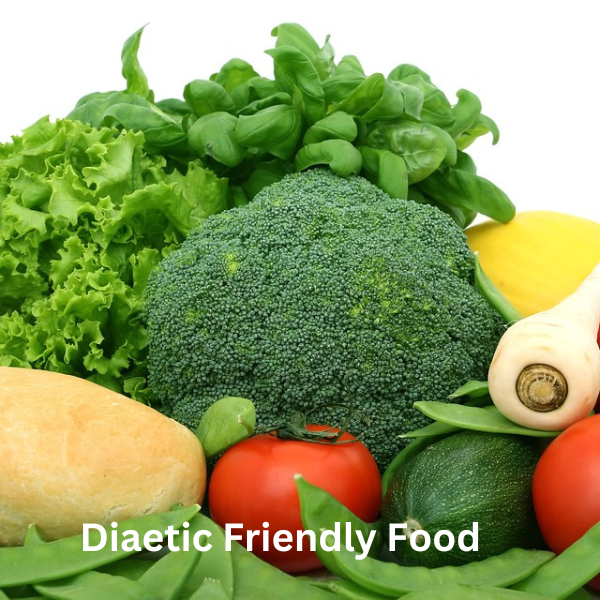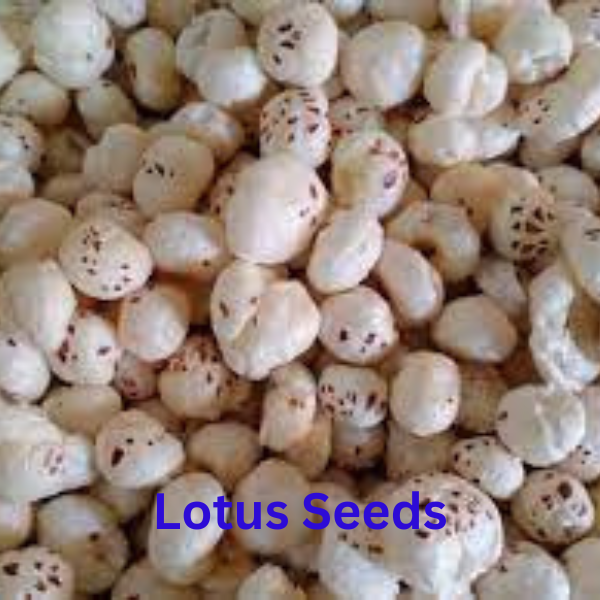Here we discuss the sugar free foods for diabetes: “Managing diabetes involves making smart food choices, and incorporating sugar-free foods into your diet can play a crucial role in controlling blood sugar levels. Among the various options available, vegetables, non-vegetarian foods, lentils and pulses, nuts and seeds, and whole grains stand out as excellent choices for diabetic patients.
These foods not only help in stabilizing blood sugar levels but also offer a wide range of health benefits, including improved heart health, weight management, and overall well-being.
Table of Contents
List of Sugar Free Foods for Diabetes and its Advantages are Discussed Here:
1. VEGETABLES
This is broadly classified into starchy vegetables and non-starchy vegetables. Most of the vegetables are excellent food for diabetes. It offers numerous benefits for diabetic patients.
Vegetables like Potato, Elephant foot Yam, Sweet potato and similar varieties are called starchy vegetables.Vegetables like beans, beetroot, carrot, cucumber, ladies finger, drumstick and almost all vegetables are called non-starchy vegetables.
Here’s a detailed explanation of the advantages:
Low in Calories and Carbohydrates:
- Most vegetables are low in calories and carbohydrates, which can help diabetic patients manage their weight and blood sugar levels effectively.
High in Fiber:
- Vegetables are an excellent source of dietary fiber and sugar free foods for diabetes, which slows down the absorption of sugar and helps control blood sugar levels.
- High-fiber vegetables promote satiety, reducing the likelihood of overeating and aiding in weight management.
Nutrient-rich:
- Vegetables are rich in essential vitamins, minerals, and antioxidants that are beneficial for overall health.
- Nutrients like vitamins A, C, and E, as well as minerals like potassium and magnesium, are important for diabetic patients as they help improve insulin sensitivity and reduce the risk of complications associated with diabetes.
Low Glycemic Index (GI):
- Most non-starchy vegetables have a low glycemic index, meaning they do not cause a rapid increase in blood sugar levels after consumption.
- This helps in keeping blood sugar levels stable throughout the day.
- The details of GI are as under:
- Low GI <55
- Medium 55 – 69
- High >70
Heart Health:
- Diabetic patients have an increased risk of heart disease. Vegetables, especially those rich in potassium and magnesium, help lower blood pressure and reduce the risk of heart disease.
- The high fiber content of vegetables also helps in lowering cholesterol levels, further reducing the risk of heart disease.
Weight Management:
- Incorporating a variety of vegetables in the diet can aid in weight management, which is essential for diabetic patients to control their blood sugar levels.
- Since vegetables are low in calories and high in fiber, they help in creating a feeling of fullness, reducing the urge to overeat.
Blood Sugar Regulation:
- Certain vegetables, such as bitter gourd, fenugreek, and broccoli, have been found to have hypoglycemic properties, which help in lowering blood sugar levels and hence this is called sugar free foods for diabetes.
- Regular consumption of these vegetables can contribute to better blood sugar control in diabetic patients.
Digestive Health:
- The high fiber content in vegetables promotes healthy digestion and prevents constipation, a common problem among diabetic patients.
- Fiber also helps in maintaining gut health by promoting the growth of beneficial gut bacteria.
Versatility in Cooking:
- Vegetables are incredibly versatile and can be incorporated into various dishes, making it easier for diabetic patients to follow a healthy and enjoyable diet plan.
- They can be eaten raw, steamed, grilled, or sautéed, and can be added to salads, soups, stews, stir-fries, and casseroles.
Overall Health and Well-being:
- A diet rich in vegetables not only helps in managing diabetes but also reduces the risk of other chronic diseases such as cancer, stroke, and obesity.
- The antioxidants present in vegetables help in reducing inflammation and oxidative stress, which are often elevated in diabetic patients.
In summary for Vegetables:
Incorporating a variety of vegetables into the diet can provide numerous health benefits for diabetic patients, including better blood sugar control, weight management, improved heart health, and overall well-being. However, it’s essential to work with a healthcare provider or a dietitian to create a personalized meal plan that suits individual dietary needs and preferences.
It is always better to have lunch in such a way that it contains 1 part of rice and 3 parts of vegetables. So that diabetic patients can control sugar levels smoothly. Because rice has a tendency of increasing sugar levels in the body.
2. NON-VEGETARIAN FOODS
Non-vegetarian foods are known s sugar free foods for diabetes. It can also offer several benefits for diabetic patients when consumed in moderation and as part of a balanced diet. Here’s a detailed explanation of the advantages:
High-Quality Protein:
- Non-vegetarian foods such as lean meats, poultry, and fish are excellent sources of high-quality protein.
- Protein helps in maintaining muscle mass, promoting satiety, and stabilizing blood sugar levels by slowing down the absorption of carbohydrates.
Low in Carbohydrates:
- Many non-vegetarian foods, such as lean cuts of meat and fish, are naturally low in carbohydrates, which can help in managing blood sugar levels.
- Non Veg foods like eggs, fish, mutton, and chicken do not have carbohydrates.So GI is zero. Also, Non veg food will help in insulin production for diabetic patients.
- Hence, blood sugar will be under control. It is better to eat lean meat like Chicken (skinless), Turkey breast and duck meat(skinless) etc.
Nutrient Density:
- Non-vegetarian foods are rich in essential nutrients such as iron, zinc, vitamin B12, and omega-3 fatty acids, which are important for overall health.
- Diabetic patients are often at a higher risk of developing deficiencies in these nutrients, making non-vegetarian foods a valuable addition to their diet.
Satiety and Weight Management:
- Protein-rich non-vegetarian foods help in increasing feelings of fullness and satiety, reducing the likelihood of overeating and aiding in weight management.
- Maintaining a healthy weight is crucial for managing blood sugar levels and reducing the risk of complications associated with diabetes.
Blood Sugar Regulation:
- Consuming non-vegetarian foods in combination with carbohydrates can help in stabilizing blood sugar levels.
- Pairing lean protein sources with carbohydrates can slow down the absorption of sugar into the bloodstream, preventing rapid spikes in blood sugar levels.
Heart Health:
- Certain non-vegetarian foods, such as fatty fish like salmon, mackerel, and trout, are rich in omega-3 fatty acids, which are beneficial for heart health.
- Omega-3 fatty acids help in reducing inflammation, lowering triglyceride levels, and improving cholesterol levels, reducing the risk of heart disease in diabetic patients.
Diverse Nutrient Profile:
- Non-vegetarian foods offer a diverse range of nutrients that are essential for overall health and well-being.
- For example, red meat is a good source of heme iron, which is more easily absorbed by the body compared to non-heme iron found in plant-based foods.
Variety and Flavor:
- Non-vegetarian foods add variety and flavor to the diet, making it easier for diabetic patients to adhere to a healthy eating plan.
- Including a variety of non-vegetarian foods such as poultry, lean meats, fish, and seafood can help prevent dietary monotony and ensure adequate nutrient intake.
Convenience and Accessibility:
- Non-vegetarian foods are widely available and can be easily incorporated into meals, making them a convenient option for diabetic patients.
- They can be grilled, baked, roasted, or stir-fried, and can be paired with a variety of vegetables and whole grains to create balanced and nutritious meals.
Regulated Blood Sugar Levels:
- Non-vegetarian foods, especially those rich in protein and healthy fats, can help in stabilizing blood sugar levels and reducing the risk of hypoglycemia.
- Including a moderate amount of non-vegetarian foods in each meal can help diabetic patients maintain steady blood sugar levels throughout the day.
In summary for Non-Vegetarian Food:
Non-vegetarian foods can be a valuable addition to the diet of diabetic patients, providing essential nutrients, promoting satiety, aiding in weight management, and supporting overall health and well-being. However, it’s important to choose lean protein sources and prepare them using healthy cooking methods to maximize their benefits and minimize health risks.
Additionally, it’s advisable to consult with a healthcare provider or a dietitian to create a personalized meal plan that meets individual dietary needs and preferences.
3. LENTILS AND PULSES
Lentils and pulses, including beans, white karamani, green karamani, Kondai Kadalai, chickpeas, and lentils, offer numerous health benefits for diabetic patients. These are also called complex carbohydrate foods and the sugar free foods for diabetes. Here’s a detailed explanation of the advantages:
Low Glycemic Index (GI):
- Lentils and pulses have a low glycemic index (Its GI is less than 40), meaning they cause a gradual rise in blood sugar levels, making them an ideal choice for diabetic patients.
- The slow and steady release of glucose into the bloodstream helps in managing blood sugar levels and preventing sudden spikes.
High in Fiber:
- Lentils and pulses are rich sources of dietary fiber, both soluble and insoluble.
- Fiber helps in slowing down the absorption of sugar and carbohydrates, preventing rapid fluctuations in blood sugar levels.
- High-fiber diets have been associated with improved glycemic control, reduced insulin resistance, and a lower risk of developing type 2 diabetes.
Nutrient Dense:
- Lentils and pulses are packed with essential nutrients such as protein, complex carbohydrates, vitamins, and minerals.
- They are particularly rich in folate, iron, potassium, and magnesium, which are important for overall health and well-being.
- These nutrients help in improving insulin sensitivity, reducing inflammation, and lowering the risk of diabetes-related complications.
Heart Health:
- Lentils and pulses are heart-healthy foods that can help in reducing the risk of cardiovascular disease, which is often elevated in diabetic patients.
- Their high fiber and protein content help in lowering cholesterol levels, reducing blood pressure, and improving heart health.
- Because of taking Doll category type, sugar level will be under control.
Weight Management:
- The high fiber and protein content of lentils and pulses help in promoting satiety, reducing hunger, and preventing overeating.
- Including lentils and pulses in the diet can aid in weight management, which is important for controlling blood sugar levels and reducing the risk of complications associated with diabetes.
Digestive Health:
- The fiber content in lentils and pulses promotes healthy digestion and prevents constipation, a common problem among diabetic patients.
- Fiber also helps in maintaining a healthy gut microbiota, which is important for overall digestive health and immune function.
Versatility in Cooking:
- Lentils and pulses are incredibly versatile and can be incorporated into a variety of dishes, including soups, stews, salads, curries, and side dishes.
- They can be combined with vegetables, whole grains, and lean protein sources to create balanced and nutritious meals for diabetic patients.
Blood Sugar Regulation:
- Studies have shown that including lentils and pulses in the diet can help in improving glycemic control and reducing the risk of complications associated with diabetes.
- Their low glycemic index and high fiber content make them an ideal choice for diabetic patients looking to manage their blood sugar levels effectively.
Affordability and Accessibility:
- Lentils and pulses are affordable and readily available, making them a convenient option for diabetic patients looking to follow a healthy and budget-friendly diet.
- They can be purchased dried, canned, or frozen and stored for long periods, making them a convenient pantry staple.
Overall Health and Well-being:
- Consuming lentils and pulses regularly can contribute to better overall health and well-being, reducing the risk of chronic diseases such as diabetes, heart disease, and obesity.
- Their nutrient-dense nature, combined with their low glycemic index and high fiber content, makes them an excellent addition to the diet of diabetic patients.
In Summary for Lentils and Pulses:
Lentils and pulses are nutrient-rich, low glycemic index foods that offer numerous health benefits for diabetic patients. Including them in the diet can help in managing blood sugar levels, promoting heart health, aiding in weight management, and improving overall health and well-being. However, it’s important to monitor portion sizes and cooking methods to maximize their benefits and minimize health risks.
4. NUTS AND SEEDS
Nuts and seeds which are sugar free foods for diabetes offer a wide range of health benefits for diabetic patients. It contains a lot of protein, Fibre, Vitamin E and omega 3 fatty acid.But, it contains very less carbohydrates.
Here’s a detailed explanation of their advantages:
Healthy Fats:
- Nuts and seeds are rich in heart-healthy monounsaturated and polyunsaturated fats, including omega-3 and omega-6 fatty acids.
- These healthy fats help in reducing inflammation, improving cholesterol levels, and lowering the risk of heart disease, which is elevated in diabetic patients.
Low Glycemic Index (GI):
- Most nuts and seeds have a low glycemic index, meaning they cause a gradual rise in blood sugar levels. Badam, Walnut, and Peanuts of GI are less than 15. So, diabetes can take these nuts and seeds.
- Consuming nuts and seeds can help in managing blood sugar levels and preventing sudden spikes, making them an ideal snack option for diabetic patients.
- People can eat one handful of these nuts daily for better sugar control.
Rich in Fiber:
- Nuts and seeds are excellent sources of dietary fiber, both soluble and insoluble.
- Fiber helps in slowing down the absorption of sugar and carbohydrates, promoting satiety, and preventing overeating.
- High-fiber diets have been associated with improved glycemic control, reduced insulin resistance, and a lower risk of developing type 2 diabetes.
Nutrient Dense:
- Nuts and seeds are packed with essential nutrients, including protein, fiber, vitamins, minerals, and antioxidants.
- They are particularly rich in magnesium, potassium, vitamin E, and plant compounds such as flavonoids and polyphenols, which have been shown to have beneficial effects on blood sugar control and insulin sensitivity.
Heart Health:
- The healthy fats, fiber, and antioxidants present in nuts and seeds help in improving heart health and reducing the risk of cardiovascular disease.
- Regular consumption of nuts and seeds has been associated with lower LDL (bad) cholesterol levels, reduced inflammation, and improved endothelial function.
Weight Management:
- Despite being calorie-dense, studies have shown that nuts and seeds can actually help in weight management when consumed in moderation.
- Their combination of protein, fiber, and healthy fats helps in promoting satiety, reducing hunger, and preventing overeating.
Blood Pressure Regulation:
- Nuts and seeds are rich in potassium, magnesium, and other minerals that help in regulating blood pressure.
- Including nuts and seeds in the diet can help in lowering blood pressure, reducing the risk of hypertension, and improving cardiovascular health.
Versatility in Cooking:
- Nuts and seeds are incredibly versatile and can be incorporated into a variety of dishes, including salads, yogurt, oatmeal, smoothies, and stir-fries.
- They can also be eaten as a standalone snack, making them a convenient option for diabetic patients looking for a quick and nutritious snack option.
Blood Sugar Regulation:
- Several studies have shown that including nuts and seeds in the diet can help in improving glycemic control and reducing the risk of complications associated with diabetes.
- Their low glycemic index, high fiber content, and healthy fats make them an ideal choice for diabetic patients looking to manage their blood sugar levels effectively.
Overall Health and Well-being:
- Consuming nuts and seeds regularly can contribute to better overall health and well-being, reducing the risk of chronic diseases such as diabetes, heart disease, and obesity.
- Their nutrient-dense nature, combined with their low glycemic index and high fiber content, makes them an excellent addition to the diet of diabetic patients.
In summary for Nuts and Seeds:
Nuts and seeds are nutrient-rich, low glycemic index foods that offer numerous health benefits for diabetic patients. Including them in the diet can help in managing blood sugar levels, promoting heart health, aiding in weight management, and improving overall health and well-being. However, it’s important to monitor portion sizes and choose unsalted varieties to maximize their benefits and minimize health risks.
5. WHOLE GRAINS
Whole grains are sugar free foods for diabetes and offer numerous health benefits for diabetic patients. Whole grains have Vitamins, Minerals,Omega3 and Omega 6 and antioxidants. This will prevent heart disease, Cancer and diabetes.
Here’s a detailed explanation of their advantages:
Low Glycemic Index (GI):
- Whole grains have a lower glycemic index compared to refined grains, meaning they cause a slower and more gradual increase in blood sugar levels after consumption.
- Consuming whole grains can help diabetic patients manage their blood sugar levels more effectively and reduce the risk of sudden spikes.
High in Fiber:
- Whole grains are rich in dietary fiber, both soluble and insoluble.
- Fiber helps in slowing down the absorption of sugar and carbohydrates, promoting satiety, and preventing overeating.
- High-fiber diets have been associated with improved glycemic control, reduced insulin resistance, and a lower risk of developing type 2 diabetes.
Nutrient Dense:
- Whole grains are packed with essential nutrients, including complex carbohydrates, protein, fiber, vitamins, minerals, and antioxidants.
- They are particularly rich in B vitamins (thiamine, riboflavin, niacin, and folate), iron, magnesium, and selenium, which are important for overall health and well-being.
Heart Health:
- The fiber, antioxidants, and phytochemicals present in whole grains help in improving heart health and reducing the risk of cardiovascular disease.
- Regular consumption of whole grains has been associated with lower LDL (bad) cholesterol levels, reduced inflammation, and improved endothelial function.
Weight Management:
- Whole grains help in promoting satiety and reducing hunger, making them an ideal choice for diabetic patients looking to manage their weight.
- Despite being calorie-dense, studies have shown that including whole grains in the diet can help in weight management and may even aid in weight loss.
Digestive Health:
- fiber content in whole grains promotes healthy digestion and prevents constipation, a common problem among diabetic patients.
- Fiber also helps in maintaining a healthy gut microbiota, which is important for overall digestive health and immune function.
Blood Pressure Regulation:
- Whole grains are rich in minerals such as potassium and magnesium, which help in regulating blood pressure.
- Including whole grains in the diet can help in lowering blood pressure, reducing the risk of hypertension, and improving cardiovascular health.
Versatility in Cooking:
- Whole grains are incredibly versatile and can be incorporated into a variety of dishes, including salads, soups, stews, stir-fries, casseroles, and side dishes.
- They can also be used to make bread, pasta, couscous, bulgur, and other grain-based products, providing plenty of options for diabetic patients.
Blood Sugar Regulation:
- Several studies have shown that including whole grains in the diet can help in improving glycemic control and reducing the risk of complications associated with diabetes.
- Their low glycemic index, high fiber content, and nutrient density make them an ideal choice for diabetic patients looking to manage their blood sugar levels effectively.
Overall Health and Well-being:
- Consuming whole grains regularly can contribute to better overall health and well-being, reducing the risk of chronic diseases such as diabetes, heart disease, and obesity.
- Their nutrient-dense nature, combined with their low glycemic index and high fiber content, makes them an excellent addition to the diet of diabetic patients.
- Diabetes should take red and brown rice and avoid white rice.
In summary for Whole Grains:
Whole grains are nutrient-rich, low glycemic index foods that offer numerous health benefits for diabetic patients. Including them in the diet can help in managing blood sugar levels, promoting heart health, aiding in weight management, and improving overall health and well-being. Because of these advantages, it is considered as the sugar free foods for diabetes.
However, it’s important to choose whole grains in their least processed form and monitor portion sizes to maximize their benefits and minimize health risks.





